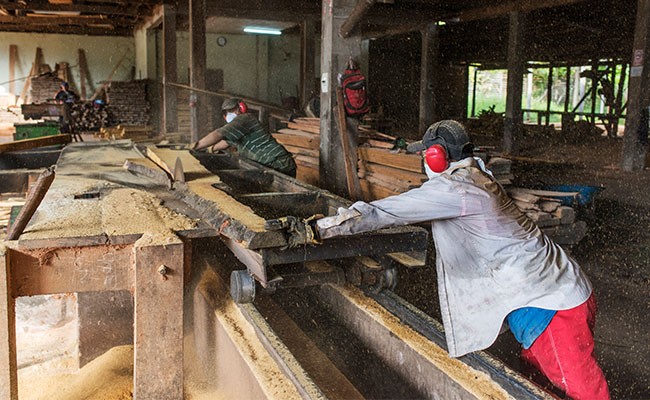- What We Do
- Agriculture and Food Security
- Democracy, Human Rights and Governance
- Economic Growth and Trade
- Education
- Environment and Global Climate Change
- Environmental and Natural Resource Management Framework
- Global Climate Change
- Conserving Biodiversity and Forests
- Sustainable Urbanization for Global Progress and Security
- Securing Land Tenure and Property Rights for Stability and Prosperity
- Sustainable Land Management
- Environmental Procedures Hub
- Knowledge Management for Environment and Natural Resources
- Tropical Forest and Coral Reef Conservation Act
- Environmental Policy Roadmap
- Gender Equality and Women's Empowerment
- Global Health
- Humanitarian Assistance
- Transformation at USAID
- Water and Sanitation
- Working in Crises and Conflict
- U.S. Global Development Lab
Speeches Shim

Worth an estimated $51–$152 billion annually, the illegal timber industry simultaneously threatens the world’s forests and steals from local communities that rely on forests for food, health, and wealth. The corruption associated with illegal logging weakens the rule of law and fuels the cycle of transnational crime.
By degrading biodiversity and forests’ economic value, forest exploitation also makes land even more vulnerable to deforestation for other uses.The continuously growing demand for commodities that require large areas of land—including soy, palm oil, and beef—drives tropical deforestation, of which nearly half is illegal. Deforestation and the conversion of forested lands to grow other commodities or to raise livestock contributes nearly 1.5 gigatons of carbon annually, about the equivalent of Russia’s annual emissions.
The USAID offices of Forestry and Biodiversity and Global Climate Change regularly engage with stakeholder forums, such as Forest Legality Week, to better understand the link between illegality, corruption, and deforestation. This work provides USAID Missions across the globe with programming tools to enhance sustainable landscapes.
From harvesting and processing to buying and selling, there are many points in the supply chain when timber and timber products may violate national and sub-national laws. These violations, in turn, have direct implications for compliance with international market laws, including the 2008 U.S. Lacey Act. USAID continues to support the U.S. Lacey act globally through partnerships with the U.S. Forest Service (USFS) and other organizations. This support has enhanced investments to scale innovative technologies, such as chemical and DNA analysis to help identify wood, or using isotopes to verify where the plant originally grew.
With USAID support, the Government of Cambodia designated more than 430,000 hectares as the Prey Lang Wildlife Sanctuary and began to recognize local tenure rights. The communities are now empowered to protect the forests on which they rely.
Real time satellite-based monitoring also continues to help with the detection of and response to illegal clearing and logging. With USAID support, the USFS has helped train law enforcement officials to use the University of Maryland’s Global Land Analysis and Discovery (GLAD) alerts. Communities are able to use GLAD alerts on mobile devices to verify intrusions and notify local authorities to take action.
Spotlight on: Forest Governance in Peru

Illegal logging and deforestation threatens the future of the Peruvian Amazon, which constitutes more than 60 percent of Peru’s land. Through the Peru Bosques and Pro-Bosques activities, USAID helped the Government of Peru strengthen the monitoring and enforcement of the forest sector and to increase legal timber for international and domestic use. USAID supported the creation of Peru's National Forest and Wildlife Service, the agency responsible for forest- and wildlife-related issues, and the National Forest and Wildlife Policy, a long-term plan for forestry management. As a result of comprehensive activities, 2,623,322 hectares within biologically important areas are operating under improved management.

Comment
Make a general inquiry or suggest an improvement.